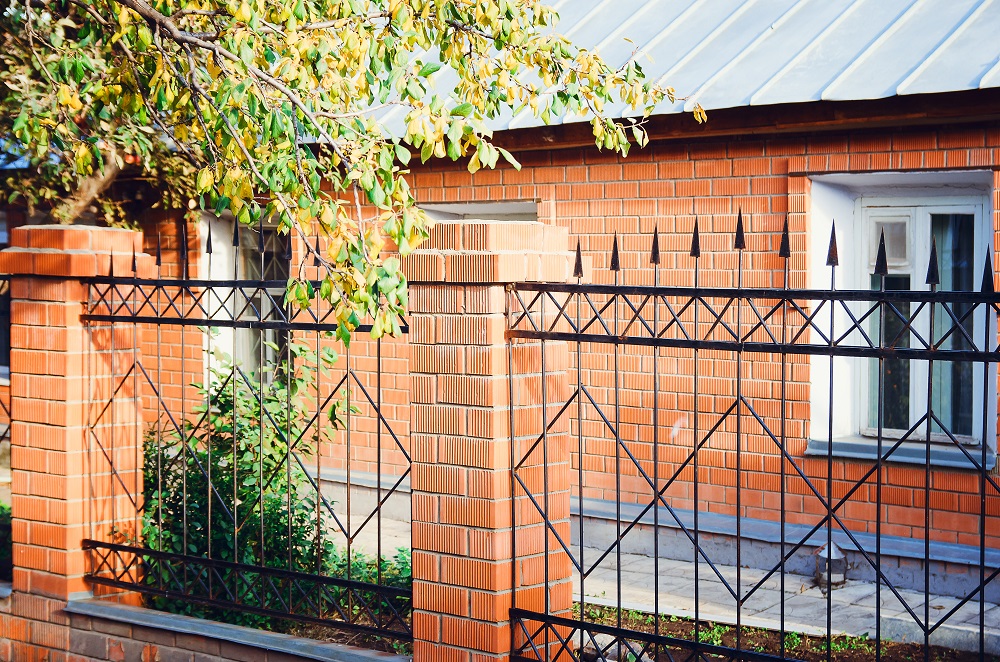Winter is a great season to install fences. After all, you wouldn’t have to worry about your landscaping as your backyard (or front lawn) would lie dormant for the season. Fence contractors are also less likely to be busy during this time. All these would speed up the installation process.
True, there may be some complications due to the cold, but with a little extra preparation and perhaps some professional guidance, you shouldn’t have any major problems.
Fencing Issues in Cold Weather
Frost heaving or frost jacking is a common problem when building fences in winter. Regardless of whether you use wood or metal fence posts, frost heaving will force the posts out of the hole if you bury it above the frost line.
This is because cold weather causes water in the soil to expand and freeze. Once the water expands, it exerts an upward force on anything buried beneath in the soil, including fence posts and deck footings. The most popular solution to frost heaving is burying the posts or footers at least a few feet below the frost line. The frost line differs depending on your state and area, so it’s best to call or visit your local city permitting office to find out how deep it goes around your property.
Digging deep alone doesn’t always solve frost heaving. It’s also recommended to lock your posts in place with concrete footers (wider at the base than the top) beneath the frost line. This ensures your posts wouldn’t be driven upwards.
The colder weather and the humidity in winter naturally affect wooden fences more. Wooden posts shrink in the cold while the alternating wet and dry periods can push out nails, screws, and fasteners in wood fences. Even vinyl fences aren’t safe from winter. The weather can cause vinyl fences to sag, warp, or crack.
Less Wood, More Metal

Metal is arguably the best fencing material for cold weather fencing. It doesn’t absorb water, so it doesn’t swell or shrink. While water can still saturate metals, it does so differently than with wood. You can also avoid rust issues provided you use the right type of metal.
Steel and aluminum are popular for fencing since both materials are durable. Thanks to modern finishes, you won’t have to worry about steel fences being susceptible to rust. Steel fences are also protected from moisture-based swelling and shrinking as it doesn’t absorb any water. Aluminum fences, meanwhile, are much lighter than steel fences and easier to install, making it ideal for beginners and do-it-yourself homeowners.
Metal fences have their fair share of disadvantages. Fences that use both steel and aluminum aren’t suited for high-salt environments (such as areas near roads salted in winter) due to galvanic corrosion. Aluminum is also more likely to bend and dent while the fittings and joints of steel fences are sometimes affected by expansion and contraction issues.
Preparing Fences for the Frost
Homeowners who have their eyes set on installing metal fences in winter should bury their fence posts deep below the frost line, ensure the soil and gravel around it are stable and secure, and apply protective paint or a sealant as an added layer of protection.
Regular maintenance is vital to make metal fences last even longer. Aside from using sealants or coatings a month before winter comes, make sure to shovel the snow around the fence base to reduce possible grounding and soil issues. It’s also advisable to remove snow on top of fences to lower its weight load.
Proper planning, wise material choices, and routine maintenance can make your fences last through several winters. Maintaining your fence will require a fair bit of your time and some effort but prolonging its lifespan saves you more trouble down the line.
Read more at Advanced Heating and AC.

